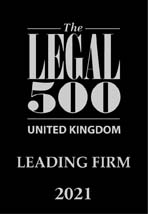Muyepa v Ministry of Defence [2021] 5 WLUK 122: Surveillance evidence and personal injury claims
An ex-soldier has made a claim against the Ministry of Defence for alleged negligence and breach of their duty of care towards him whilst serving as a soldier in 2016.
He suffered injury to his hands and feet, otherwise known as ‘trench foot’ as a result of standing in wet boots for a lengthy duration after his exercise in a cold-water filled tunnel.
The Claimant intimated that this led to a ‘debilitating over-sensitivity to the cold’ which he alleged caused him crippling pain.
He was exposed to similar cold conditions in 2017, and was medically discharged from the military in 2018, when he began his compensation claim.
In March 2020, the parties exchanged written statements and the Claimant was seen by various experts. The doctor reported that his reaction to weight bearing seemed ‘dramatic and didn’t look .. natural’.
In response, the Claimant asked the Defendant whether it would be alleging fundamental dishonesty with the Defendant informing the Claimant that a reply was not required.
However, a few weeks later, a video was brought to the attention of the Defendant. This was a video posted on social media by the Claimant’s wife, appearing to show him dancing at a BBQ in summer 2018.
Further surveillance came to light, firstly another social media entry showing the Claimant performing as a DJ at a party, and secondly, secret footage of the Claimant taken by surveillance experts showing him shopping, running errands and driving a vehicle.
A schedule of loss was filed by the Claimant, alluding to a claim worth £3.7 million which included £1.7 million for future care costs, £826,000 for lost earnings and £345,000 for lost military pension benefit. This schedule was not filed until February 2021.
The Defendant admitted breach of duty in March 2021, but in light of the schedule of loss, applied to adduce the surveillance evidence, indicating for the first time that they now intended to argue fundamental dishonesty on the basis that the footage is evidence the claim was materially exaggerated thus potentially impacting the level of quantum awarded.
The question for the court was whether the application to adduce the evidence could be granted.
But in reaching this decision, what factors would the court need to consider with regards to surveillance footage?
The court would need to balance the interests of both parties to ensure fair justice.
The Civil Procedure Rules (CPR) makes no separate provision for surveillance evidence – in accordance with CPR 31.4 a recording is regarded a document and is therefore privileged; it is not capable of being disclosed in Part 1 of standard disclosure.
As in the current case, this privilege is waived the moment the footage is used to attack the opponents’ case and will therefore be subject to all the rules as to disclosure and inspection of documents contained in CPR 31. This will include the evidence in its entirety, and not just a snippet of the footage.
The opponent may challenge the authenticity of the surveillance and in which case a signed witness statement by the person who took the film, must be filed. Where authenticity is not challenged, then it is available for the purposes of cross-examining the opposition and their medical witness at court, unless the court orders otherwise.
There are three particular features of surveillance evidence giving rise to special considerations.
Firstly, surprise.
The very essence of surveillance is that it captures footage when the individual(s) are unaware they are being observed and therefore prior notice must be avoided.
This can be achieved under CPR 3.18, which provides that the court may allow costs not set out in the costs budget if there is a legitimate reason to do so, and therefore avoiding the need to record it in the cost budget.
Secondly, secrecy.
Equally, the individual must remain unaware of the observation throughout. However, be mindful that there are limits to the length that you should go to obtain such evidence – intrusion of private and family life is relevant to its admissibility in court.
Finally, timing.
The forensic value of obtaining such footage is to undermine the opponents’ case. Therefore, you need the opponent to pin their factual case ‘to the mast’ before disclosing the evidence. However, it must not be disclosed so late as to constitute an ambush.
In this situation, where video evidence was available which undermined the Claimant’s position to such an extent that would substantially reduce an award of damages, it would be reasonable to permit cross-examination of the Claimant in this regard so long as that did not amount to trial by ambush.
The question in respect of ambush is whether the circumstances in which the evidence is disclosed is such that the Claimant has a fair opportunity to deal with it.
In this case, the Claimant’s argument was that the Defendant had ‘ambushed’ him with the new evidence just one month before trial. Therefore, the court had to determine whether disclosing this evidence at short notice was reasonable or if the Defendant was guilty of delay in producing the evidence, either by apathy or to take unfair advantage of the Claimant.
The court highlighted the puzzling lack of improvement in the Claimant’s condition over several years, the symptom exaggeration noted by the medical expert, and that in filing the cost budget so soon before trial began resulted in a lack of hard figures being presented to the Defendant in good time.
The court considered that the Defendant would potentially suffer significant prejudice if the evidence was excluded, and assessed this in light of the potential prevention of the Claimant for fair opportunity to respond.
The court held that on this occasion, the Defendant had not actioned deliberate stalling tactics and the application was allowed - the Defendant had permission to include the footage and the trial was postponed.







